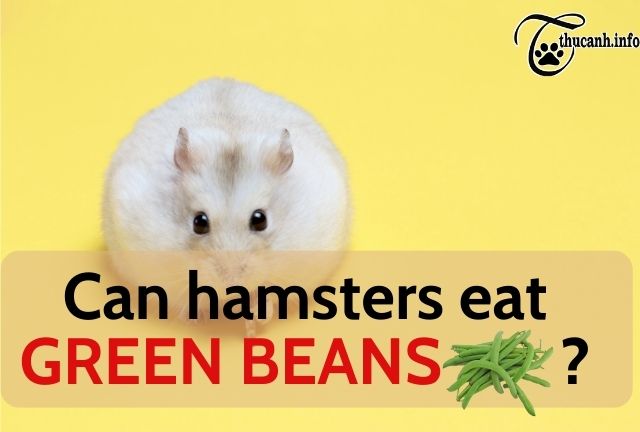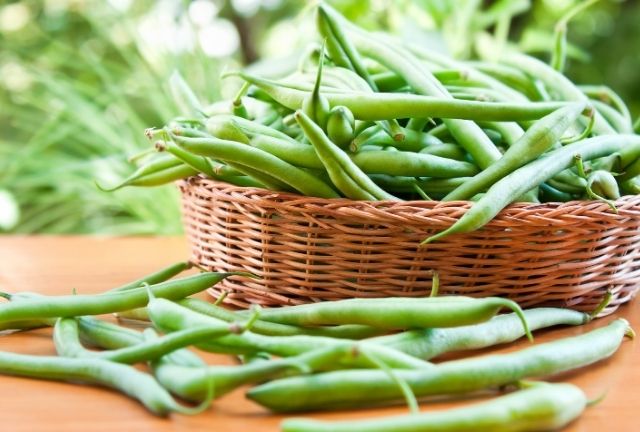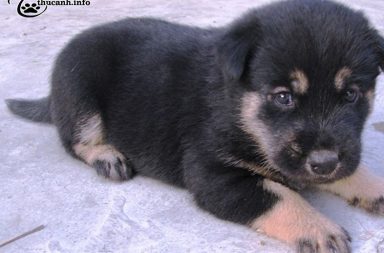Can Hamsters Eat Green Beans? If you’re a hamster owner, you may be wondering if green beans are a safe and suitable addition to your furry friend’s diet. Green beans are a popular vegetable among humans, but can hamsters enjoy them too?
In this article, we will explore whether hamsters can eat green beans and provide you with the information you need to make informed decisions about your pet’s diet. Let’s delve into the world of hamsters and green beans!

How good does a hamster eat green beans?
I) Can hamsters eat green beans?
This is a common question among hamster owners. Researchers led by Mathilde Tissier at the University of Strasbourg had set out to determine hamsters can eat green beans! Green beans can be a healthy and nutritious addition to a hamster’s diet. However, there are a few things to keep in mind to ensure their safety and well-being.
Green beans are rich in vitamins, minerals, and fiber, making them a beneficial food for hamsters. They provide essential nutrients that support their overall health and digestion. The fibrous texture of green beans also promotes dental exercise, helping to keep their teeth in good condition.

How many green beans should hamsters eat?
II. The Nutritional Value of Green Beans for Hamsters
A. Overview of the nutrients found in green beans
Can Hamsters Eat Green Beans? Green beans are not only delicious but also packed with essential nutrients that can benefit hamsters. These nutrient-rich vegetables contain vitamins, minerals, and fiber, which contribute to a well-rounded diet for your furry friend.
B. Benefits of green beans for hamsters’ overall health
- Vitamins: Green beans are a great source of vitamins such as vitamin A, vitamin C, and vitamin K. These vitamins play crucial roles in maintaining a healthy immune system, promoting proper growth and development, and supporting overall well-being.
- Minerals: Green beans are rich in minerals like potassium, iron, and calcium. These minerals are essential for various bodily functions, including nerve and muscle function, bone health, and maintaining electrolyte balance.
- Fiber: Green beans are high in dietary fiber, which aids in digestion and helps prevent constipation. Fiber also promotes a healthy gut microbiome, contributing to optimal digestive health in hamsters.
C. Vitamins, minerals, and fiber content
- Vitamin A: Green beans are a good source of vitamin A, which is important for maintaining healthy eyesight, promoting skin health, and supporting the immune system.
- Vitamin C: Green beans contain vitamin C, which acts as an antioxidant and aids in collagen production, promoting healthy skin, cartilage, and blood vessels.
- Vitamin K: Green beans provide vitamin K, which plays a crucial role in blood clotting and bone health.
- Potassium: Green beans are a rich source of potassium, an essential mineral that helps regulate blood pressure, supports muscle function, and promotes proper heart health.
- Iron: Green beans contain iron, which is necessary for the production of red blood cells and oxygen transport in the body.
- Calcium: Green beans provide calcium, which is vital for maintaining strong bones and teeth in hamsters.
- Fiber: Green beans are high in dietary fiber, which aids in digestion, promotes a healthy gut environment, and helps regulate bowel movements.
By including green beans in your hamster’s diet in moderation, you can provide them with a variety of nutrients that contribute to their overall health and well-being.
Remember, it’s important to introduce green beans gradually and monitor your hamster’s response. If you notice any adverse reactions or digestive issues, it’s best to consult a veterinarian for guidance.
In conclusion, green beans can be a nutritious addition to a hamster’s diet. With their abundance of vitamins, minerals, and fiber, green beans offer numerous health benefits for these small pets. However, as with any food, moderation is key, and it’s essential to consider your hamster’s individual dietary needs and preferences.
III. Potential Risks and Cautions When Feeding Green Beans to Hamsters

What kind of green beans do hamsters eat?
A. Highlighting the importance of moderation and balance
When it comes to feeding green beans to hamsters, it’s crucial to maintain moderation and ensure a balanced diet. While green beans offer several nutritional benefits, excessive consumption can lead to potential risks and health issues for your furry friend.
B. Risks associated with overfeeding green beans
- Digestive Issues: Feeding an excessive amount of green beans to hamsters can cause digestive problems such as diarrhea or bloating. This is why it’s important to introduce green beans gradually and monitor your hamster’s response.
- Imbalanced Diet: Overfeeding green beans can result in an imbalanced diet, as hamsters require a variety of foods to meet their nutritional needs. Green beans should be considered as a supplement rather than a primary source of nutrition.
C. High calcium content and its potential impact on kidney or bladder stones
- Calcium Content: Green beans naturally contain calcium, which is an essential mineral for hamsters. However, excessive calcium intake can lead to the formation of kidney or bladder stones, particularly in certain hamster breeds prone to these conditions.
- Moderation is Key: It’s important to feed green beans to hamsters in moderation, taking into consideration their overall calcium intake from other food sources. Consulting with a veterinarian can help determine the appropriate amount of green beans to include in your hamster’s diet.
By exercising caution and providing a balanced diet, you can minimize the potential risks associated with feeding green beans to your hamster. Remember to monitor your hamster’s health and consult a veterinarian if you notice any unusual symptoms or concerns.
In conclusion, while green beans can be a healthy addition to a hamster’s diet, it’s crucial to practice moderation and consider the specific needs of your individual pet. By offering green beans as part of a diverse and balanced diet, you can provide your hamster with nutritional benefits while minimizing potential risks.
IV. Feeding Guidelines and Recommendations

Green bean images
A. Recommended portion sizes and frequency of offering green beans
When feeding green beans to your hamster, it’s important to provide them with appropriate portion sizes and follow a suitable frequency. Green beans should be given as a supplement to their regular diet, rather than a primary food source.
A general guideline is to offer a small portion of green beans once or twice a week. This helps to ensure a balanced diet and prevents overconsumption.
B. Gradual introduction process for new foods
Introducing green beans or any new food to your hamster’s diet should be done gradually. Start by offering a small piece or two and observe your hamster’s response. If they show positive signs, such as enjoying and tolerating the green beans well, you can gradually increase the portion size over time.
However, if your hamster displays any adverse reactions or digestive issues, it’s essential to discontinue feeding green beans and consult a veterinarian.
C. Monitoring hamster’s response and adjusting accordingly
Can Hamsters Eat Green Beans? Every hamster is unique, and their dietary needs may vary. It’s crucial to closely monitor your hamster’s response to green beans. Watch for any signs of discomfort, digestive upset, or changes in their overall health. If you notice any adverse effects, it may be necessary to limit or eliminate green beans from their diet.
Remember to consult with a veterinarian if you have any concerns or questions.
V. Delicious and Nutritious Alternatives to Green Beans
A. Exploring other safe fruits and vegetables for hamsters
While green beans are a safe option for hamsters, it’s always beneficial to offer a diverse range of fruits and vegetables. Some delicious and nutritious alternatives include carrots, broccoli, cucumbers, and leafy greens like spinach or kale. These provide a variety of vitamins, minerals, and fiber to support your hamster’s overall health.
B. Nutritional value and appropriate serving sizes of alternatives
Understanding the nutritional value and appropriate serving sizes of alternative fruits and vegetables is crucial. Each food has its unique composition, and it’s important to provide the right balance.
For example, carrots are rich in beta-carotene and should be offered in small, bite-sized portions. Leafy greens can be given in moderation, as they contribute to hydration and provide essential nutrients.
C. Ensuring a varied and enjoyable diet for your hamster
Offering a varied diet not only ensures proper nutrition but also keeps your hamster engaged and stimulated. Incorporate different fruits, vegetables, and occasional treats into their diet to provide a range of flavors and textures. Remember to introduce new foods gradually and monitor your hamster’s response to ensure they enjoy and tolerate them well.
By following these feeding guidelines and exploring alternatives, you can provide a healthy and enjoyable diet for your hamster. Remember to consider your hamster’s individual needs and consult with a veterinarian for personalized advice.
VI. The Importance of Dental Health and Chewing
A. Discussing the significance of dental health for hamsters
Maintaining good dental health is crucial for the well-being of hamsters. Their teeth continuously grow, and proper chewing helps keep their teeth at an appropriate length and prevents dental issues. Green beans, along with other crunchy treats, play a vital role in providing dental exercise for hamsters.
B. How green beans and crunchy treats contribute to dental exercise
The fibrous texture of green beans requires hamsters to gnaw and chew, promoting dental wear and preventing overgrowth. By incorporating green beans into their diet, you provide an opportunity for natural tooth filing and jaw exercise. Additionally, crunchy treats like small dried fruits or gnawing sticks can further aid in maintaining healthy teeth.
C. Recommendations for safe and engaging chew toys and treats
In addition to green beans, it’s essential to provide safe and engaging chew toys and treats for hamsters. These items stimulate their natural chewing instincts and help keep their teeth in optimal condition. Look for chew toys made specifically for hamsters, such as wooden blocks or mineral chews. Avoid items with small parts that can be swallowed or pose a choking hazard.
In summary, when it comes to the question “Can hamsters eat green beans?“, the answer is yes! Green beans can be a healthy and safe addition to your hamster’s diet. They provide essential nutrients and fiber. However, it’s crucial to introduce new foods gradually and observe your hamster’s response. Always consult with a veterinarian, including THUCANH, for personalized guidance on your hamster’s dietary needs. Remember to prioritize your hamster’s well-being by offering a varied and balanced diet.


